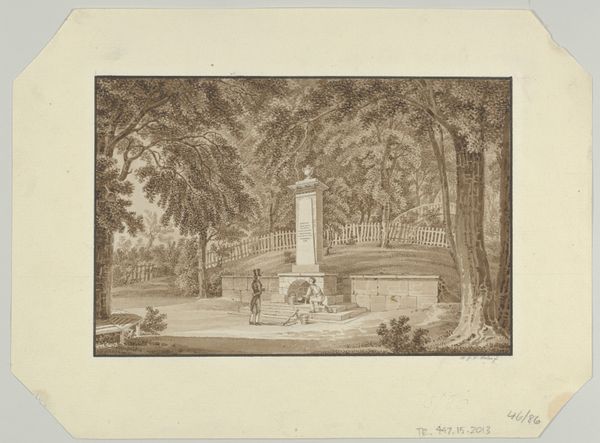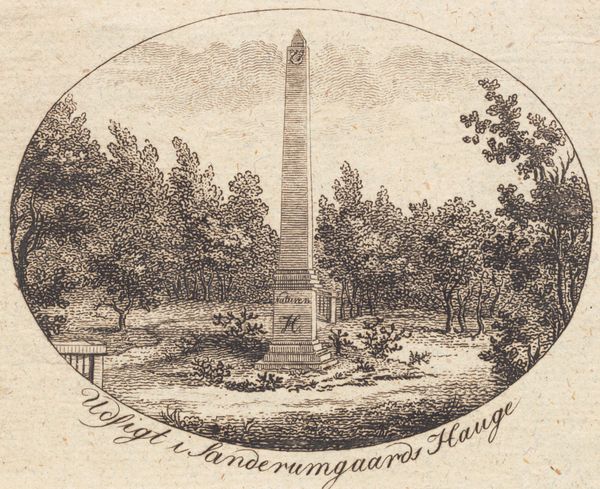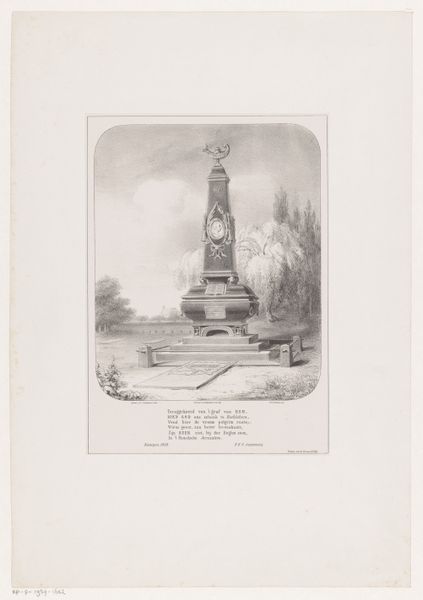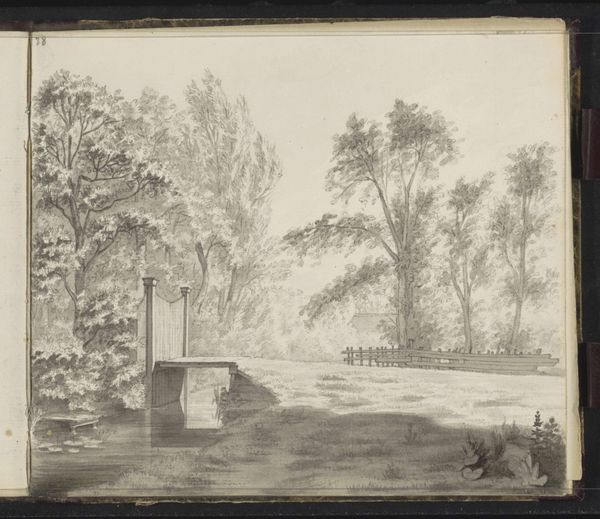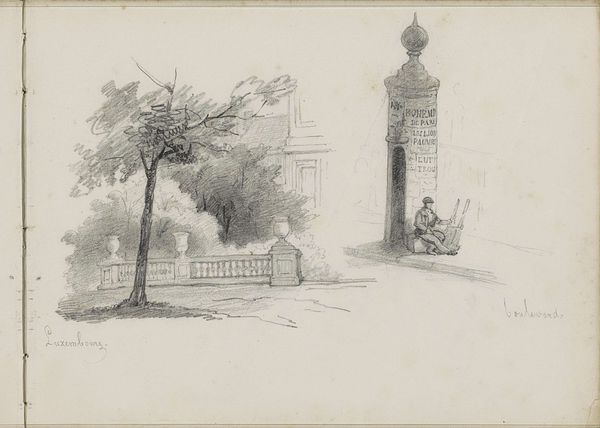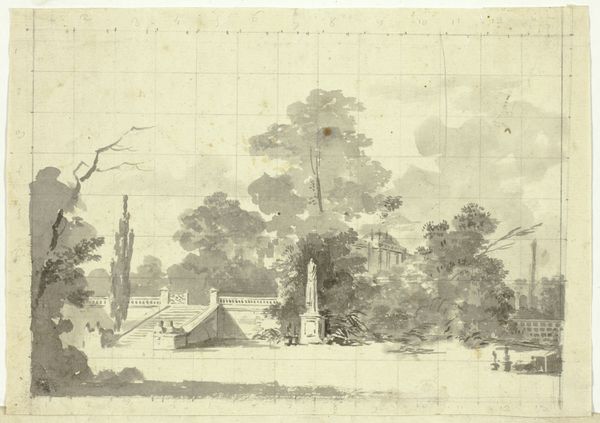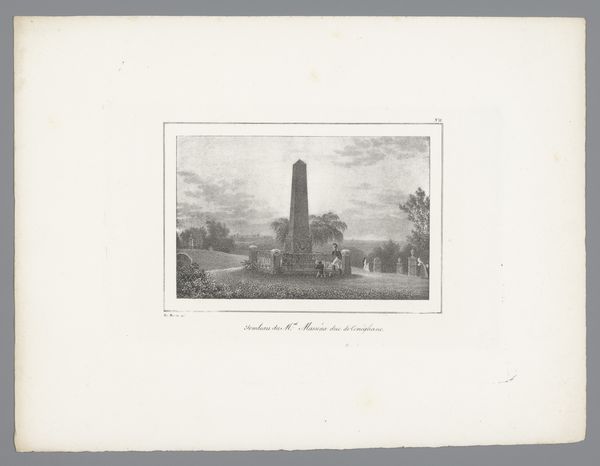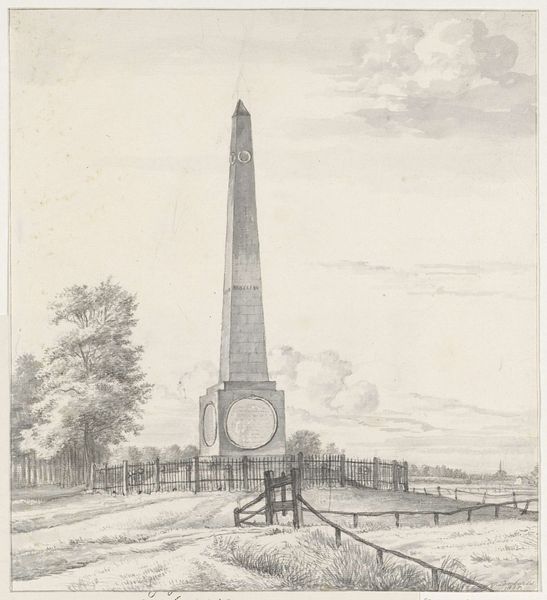
drawing, pencil
#
drawing
#
neoclacissism
#
landscape
#
pencil
Dimensions: 102 mm (height) x 167 mm (width) (bladmaal)
Editor: Here we have "Sanderumgaards have VII," a pencil drawing by J.F. Clemens from around 1800. There's a stark obelisk centered in a carefully arranged landscape. It feels so controlled, almost artificial in its neatness. What strikes you when you look at this? Curator: What interests me is how Clemens is using readily available and affordable materials, pencil and paper, to depict a highly manufactured environment. A garden like this isn’t natural; it represents considerable labor and capital transformed into leisure and aesthetics. Editor: So you're focusing on the materials as a sign of the social context? Curator: Exactly! Think about where the pencil lead comes from – mining, trade, production – and then the paper, derived from processed plant fiber. These simple materials become the tools to not just depict but also participate in constructing this vision of idyllic, controlled nature accessible to a particular social class. Editor: I never thought about it that way, considering the resources just to make the art materials themselves. How would this challenge our view of Neoclassicism as a purely aesthetic movement? Curator: It forces us to acknowledge the economic underpinnings that enabled such artistic endeavors and the ideology they often promoted. It also prompts us to look at the labor that went into the garden's construction that the drawing celebrates. Who built that obelisk and shaped that landscape? Editor: So it's not just about the beauty, but about the power structures inherent in creating and depicting this kind of scene? Curator: Precisely. It’s a beautiful drawing, yes, but one deeply embedded in the material conditions and social inequalities of its time. Editor: I'll definitely look at landscapes differently now, considering the hidden stories in their making!
Comments
No comments
Be the first to comment and join the conversation on the ultimate creative platform.



